#rené west
Text
Remember what they took away from you...

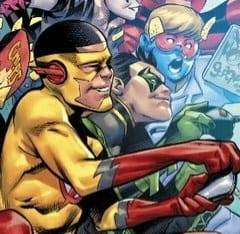
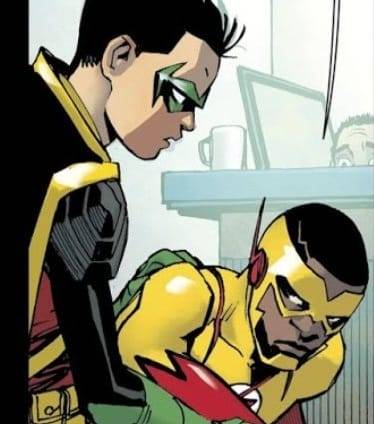

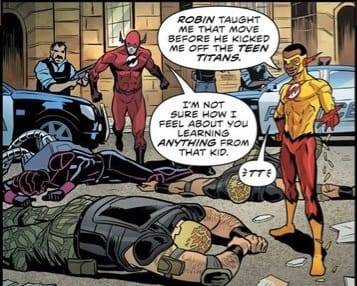




This ship and their dynamic drives me insane, can you tell?
-Mod René
#the flash#batman#flashfam#batfam#wallace west ii#damian wayne#damiwallace#kid flash#robin#dc comics#mod rené#february#1st#2024
90 notes
·
View notes
Text

West Berliners making signs to friends and relatives on the other side of the Berlin wall. West Germany. 1961
Photo: René Burri
58 notes
·
View notes
Text

There is great irony in the fact that the modern process of stamping out religion produces countless caricatures of it.
René Girard
#girard#rené girard#religion#secularism#postmodernism#christian heritage#the west#civilisation#society#spiritual#mimetic theory#french#philosopher
96 notes
·
View notes
Photo
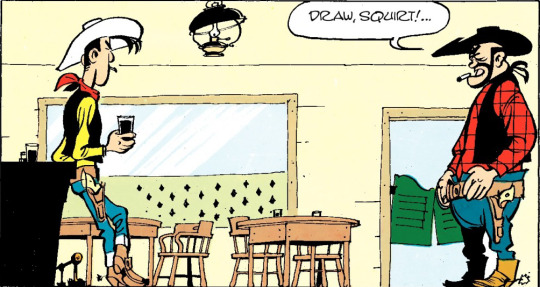

A Lucky Luke Adventure : Rails on the prairie
#top ten panels that live rent free in my head#lucky luke#morris#rené goscinny#old west#cowboy#comics
31 notes
·
View notes
Text







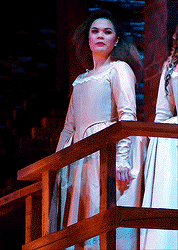
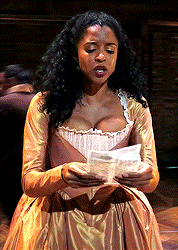
neverending list of dream roles: Angelica Schuyler - Hamilton
#hamilton#hamilton musical#angelica schuyler#musicaledit#musicaltheatreedit#broadway#broadwayedit#west end#hamilcast#hamilcastedit#musicalsgifs#hamiltonedit#broadwaydaily#renee elise goldsberry#renée elise goldsberry#rachel john#akina edmonds#dream roles#listen the australian cast is so important to me.............#i gifed this#peach fuzz and he can't even grow it#musicalgifs#asiantheatrenet
6 notes
·
View notes
Text
Every Body Shines: Sixteen Stories About Living Fabulously Fat
Every Body Shines: Sixteen Stories About Living Fabulously Fat
Every Body Shines: Sixteen Stories About Living Fabulously Fat, is edited by Cassandra Newbould, with a intro by Aubrey Gordon (from Maintenance Phase!), with short body-positive stories by Nafiza Azad, Chris Baron, Sheena Boekweg, Linda Camacho, Kelly deVos, Alex Gino, Claire Kann, amanda lovelace, Hillary Monahan, Cassandra Newbould, Francina Simone, Rebecca Sky, Monique Gray Smith, Renée…
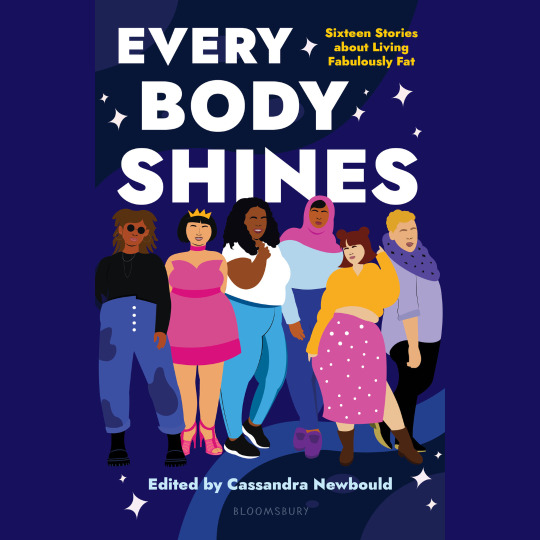
View On WordPress
#Alex Gino#amanda lovelace#Aubrey Gordon#body positivity#Cassandra Newbould#Catherine Adel West#Chris Baron#Claire Kann#Francina Simone#Hillary Monahan#Jennifer Yen#Kelly deVos#Linda Camacho#Monique Gray Smith#Nafiza Azad#Rebecca Sky#Renée Watson#Sheena Boekweg
4 notes
·
View notes
Text

René Burri. Working class housing. Ruhr region. West Germany. Krupp industry. 1961.
203 notes
·
View notes
Text
Astrology tea 🍵🍵🍵

Credit goes to my blog @astroismypassion
Trigger warning mentions of de**h, d***s
🍵 You know how Sagittarius Sun truly express their feelings? It shimmers through just a bit when they exaggerate a story. If they exaggerate a piece of information, you bet they were very surprised, too stunned to speak at the time it was happening. And them being surprised, shocked often equals exaggeration of a story.
🍵 Try to see where Juno and asteroid Groom overlap. If you have a Cancer Juno, yet Groom at 28 (Cancer degree), it could be a Cancer Sun that ends up proposing you.
🍵 But when you look at your own asteroid Briede (19029) sign, this is the Sun sign YOU might be the most serious about and who you would propose to.
🍵 Cancer Venus always gives a thoughtful, yet small, sometimes a cheap gift that relates to both of you, connects you two. For example you both like drinking tea and they buy you a tea cup and tea bags. Or you both really enjoy vinyl records and they buy you one. It’s always something that connects you two. 😀 You guys are really thoughtful gift-givers!
🍵 Aries Mercury gets really bored of one way of communicating for too long. For example, if you were sending each other audio messages for too long, they will want to change it and do phone call instead or video call etc.
🍵 Gemini Chiron and Gemini Lilith often gets scars, bruises on their fingers, hands. Or they may get skin on their hands, fingers easily burnt when cooking, when starting a fire.
🍵 Virgo over the 5th house might develop a crush on any person that they share the same ideas, viewpoint. If they like someone’s arguments, life philosophy, habits. They might develop a crush on someone when they think “This (wo)/man thinks just like me!”. They could also strongly relate to certain book authors and writers, because of the way they think, they might have a strong liking of their work. They might be prone to cheating mentally, if this would exist. When they are starting to agree more with someone else’s viewpoints, opinions than their partner’s, you might be losing them. 😬
🍵 Sagittarius Suns with Scorpio Mercury are oddly preoccupied with the idea of death and them dying and how they will die. Some have special requests on how they wish to be buried or which song they would like to be played at their funeral.
🍵 I noticed Scorpio Mercury are controversial, but for some reason Taurus Mercury seem to be too. Like Taurus Mercury celebrities Kanye West, Megan Fox, Kristen Stewart, Lena Dunham, Miranda Kerr, Donatella Versace, Abigail Breslin, Cher, Kirsten Dunst, Renée Zellweger. They had some controversial views and opinions throughout years. They are just likely to be canceled on the internet or just really disliked due to jealousy, envy they evoke in others as much as Scorpio Mercury. They could also receive public dislike online.
🍵 If you have Aries Part of Fortune you might find yourself in struggles in life (difficulties in college, financial issues etc.) that not even your family members will be able to advise you on or support you. In times of conflict and stress you will often be alone to find the real courage and strength needed.
🍵 People might not believe Pisces Moon when they say they don’t do drugs. Also, they could experience random drug tests.
🍵 However, also on Pisces Moon: they have weird fascination with psychedelics, yet dislike weed and drugs. Some believe psychedelics could heal their trauma. 🤷🏼♀️
🍵 I noticed Aries Moons often have a female sibling. They grew up around strong women in their family who are very independent, unmarried or career driven.
🍵 Sagittarius Sun when younger might have often been the butt of the joke in their friend group. This is one side of Sagittarius Sun that hasn’t been talked enough. People have made fun on their expense often times when their were feeling insecure enough on their own. That’s why they try to not show much emotion, appear unfazed and diffuse things back with humour.
🍵 Aquarius Venus might date their friend, or multiple people until committed or could ghost. But Uranus in the 2nd house?? These guys don’t participate in hookup culture (and rebel against it), don’t entertain multiple people (doesn’t have a roaster), don’t do ghosting.
🍵 Taurus Venus has a love language of gift giving and this is also how they flirt, they just start buying you things or food. Yet, sometimes this can come across trying to buy their loved one’s love. 😬
🍵 Venus in the 6th house looves using hand cream. People compliment them for their soft hands more than they would any other placement.
🍵 Asteroid Kiss sign in the Kiss Persona chart could indicate the Sun sign of the person you will share your first kiss with.
Credit goes to my blog @astroismypassion
#astro notes#astro observations#astrology blog#astrology observations#astroismypassion#cancer venus#asteroid briede#virgo over the 5th house#sagittarius sun#sun in sagittarius#cancer sun#juno#groom#astrology#astroblr#astro community#aries moon#aquarius venus#uranus in the 2nd house#taurus venus#venus in the 6th house#asteroid kiss
1K notes
·
View notes
Text

Afrique 50 (1950, documentary, 17mn)
The first French anti-colonialist film, the film derived from an assignment in which the director was to cover educational activities by the French League of Schooling in West Africa (in modern Mali and Ivory Coast).
The director, René Vautier, later filmed what he saw, a "lack of teachers and doctors, the crimes committed by the French Army in the name of France, the instrumentalization of the colonized peoples".
For his role in the film Vautier was imprisoned over several months. The film was not permitted to be shown for more than 40 years. (x)
In France the film is currently available for free for a week on tënk here. Elsewhere you can find it here, with English subtitles.
65 notes
·
View notes
Text
Thousands of people marched and cheered down Montreal's René-Lévesque Boulevard Sunday afternoon in what has become the largest Pride parade organized by Fierté Montréal to date.
Around 15,500 people took part in the parade representing 192 different groups and community organizations, according to Simon Gamache, the executive director of Fierté Montréal.
Parade participants waved colourful flags and blared music along a 2.9-kilometre route that began at Dorchester Square and stretched into the heart of Montreal's Gay Village.
Among the crowd was Matthew Xanthoudakis, who was marching with the West Island LGBTQ2+ Centre. [...]
Continue Reading.
Tagging: @politicsofcanada, @vague-humanoid
90 notes
·
View notes
Note
hi i'm stalking you and your orv tag and I came across the one where u and sash talked about the metaliterature and philosophical/theoretical present in orv https://ot3.tumblr.com/post/646102842844872704 here and I just wanna know if you have more of these from the top of your head? Sorry if this is a tall order, you don't have to answer this rn!
i outsourced this one to sash. everyone say thank you sash.
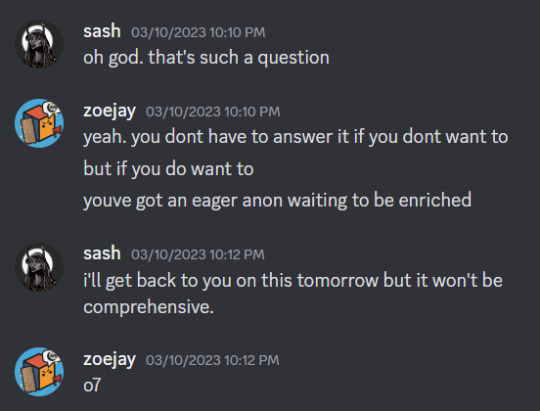
sash — Today at 7:55 PM
okay. a little bit late but i've been giving it some thought.
i think the biggest Thing in orv in terms of philosophy is poststructuralism, and you're def going to find ideas by roland barthes in it (e.g. the classic "death of the author", or the idea of cultural phenomena as modern myths from "mythologies"). like, orv deals a lot with escaping clear categorizations and rejecting binaries + meaning of a text being generated from a network of related stories, rather than being intrinsic to one specific work. and those things are arguably the key characteristics of poststructuralism (though take this with a massive grain of salt bc it's notoriously difficult to define due to its very nature). i actually had an essay about this in the works but don't ask me when i'll finish it, it's currently languishing half-written in my google drive.
that aside sing shong namedrop quite a lot of literary works/philosophers. off the top of my head:
anna croft's zarathustra --> nietzsche's "thus spoke zarathustra" (i've seen a reddit essay that delves into this one in particular)
theater dungeon endboss --> "simulacra and simulation" by jean baudrillard
lsk's faction called "nouvelle vague" --> french art film movement from the 50s
aileen makerfield's "etika clock store" --> POSSIBLY a reference to spinoza's "ethica" but do not take my word for this, it's just a wild guess
fourth wall --> bertolt brecht's verfremdungseffekt
hsy's --> "the neverending story" by michael ende
outer gods/hounds of tindalos --> h.p. lovecraft (particularly sp --> nyarlathotep)
ofc there's also ysa's haruki murakami, han kang and raymond carver thing which. maybe that's a coincidence or just meant to highlight ysa's highbrow tastes but it's…. Something. in the epilogue, judith butler, roland barthes (or at least "mourning diary") and pierre bourdieu are mentioned by name as well.
[8:00 PM]
so like. there's A Lot. orv is juggling a million references at all times, some of which are super obvious (like journey to the west, wizard of oz or the book of revelations) and others are ??? who knows. they even like to draw connections to their other webnovels which is becoming even more relevant in the side stories.
sash — Today at 8:05 PM
i have seen someone on postype talk about daniel dennett, walter benjamin and rené girard in relation to orv as well but i don't know much about them so i'm unsure if it's a case of sing shong planting explicit references that i have missed, or if op was simply doing "normal" analysis. point is that 1) sing shong love their french philosophers 2) if you want, you can find Anything in orv. there is a sheer endless amount of stuff to pick apart.
98 notes
·
View notes
Text

West Germany. Munich. Public school. 1962
Photo: René Burri
31 notes
·
View notes
Text
Queen Margaret (of Anjou) had written to the Common Council in November when the news of the Duke of York's coup was proclaimed. The letter from the queen was published in modernised English by M.A.E. Wood in 1846, and she dated it to February 1461 because of its opening sentence: ‘And whereas the late Duke of N [York]...." However the rest of the letter, and that of the prince, is in the present tense and clearly indicates that the Duke of York is still alive. The reference to the ‘late duke’ is not to his demise but to the attainder of 1459 when he was stripped of his titles as well as of his lands. If the queen’s letter dates to November 1460, and not February 1461, it make perfect sense. Margaret declared the Duke of York had ‘upon an untrue pretense, feigned a title to my lord’s crown’ and in so doing had broken his oath of fealty. She thanked the Londoners for their loyalty in rejecting his claim. She knew of the rumours,
that we and my lords sayd sone and owrs shuld newly drawe toward yow with an vnsome [uncounted] powere of strangars, disposed to robbe and to dispoyle yow of yowr goods and havours, we will that ye knowe for certeyne that . . . . [y]e, nor none of yow, shalbe robbed, dispoyled nor wronged by any parson that at that tyme we or owr sayd sone shalbe accompanied with
She entrusted the king's person to the care of the citizens ‘so that thrwghe malice of his sayde enemye he be no more trowbled vexed ne jeoparded.’ In other words the queen was well informed in November 1460 of the propaganda in London concerning the threat posed by a Lancastrian military challenge to the illegal Yorkist proceedings. Margaret assured the Common Council that no harm would come to the citizenry or to their property. Because the letter was initially misdated, it has been assumed that the queen wrote it after she realised the harm her marauding troops were doing to her cause, and to lull London into a false sense of security. This is not the case, and it is a typical example of historians accepting without question Margaret’s character as depicted in Yorkist propaganda. Margaret’s letter was a true statement of her intentions but it made no impact at the time and has made none since. How many people heard of it? The Yorkist council under the Earl of Warwick, in collusion with the Common Council of the city, was in an ideal position to suppress any wide dissemination of the letter, or of its content.
... When Margaret joined the Lancastrian lords it is unlikely that she had Scottish troops with her. It is possible that Jasper Tudor, Earl of Pembroke, sent men from Wales but there was no compelling reason why he should, he needed all the forces at his disposal to face Edward Earl of March, now Duke of York following his father’s death at Wakefield, who, in fact, defeated Pembroke at Mortimer’s Cross on 2 February just as the Lancastrian army was marching south. The oft repeated statement that the Lancastrian army was composed of a motley array of Scots, Welsh, other foreigners (French by implication, for it had not been forgotten that René of Anjou, Queen Margaret’s father, had served with the French forces in Nomandy when the English were expelled from the duchy, nor that King Charles VII was her uncle) as well as northern men is based on a single chronicle, the Brief Notes written mainly in Latin in the monastery of Ely, and ending in 1470. It is a compilation of gossip and rumour, some of it wildly inaccurate, but including information not found in any other contemporary source, which accounts for the credence accorded to it. The Dukes of Somerset and Exeter and the Earl of Devon brought men from the south and west. The Earl of Northumberland was not solely reliant on his northern estates; as Lord Poynings he had extensive holdings in the south. The northerners were tenants and retainers of Northumberland, Clifford, Dacre, the Westmorland Nevilles, and Fitzhugh, and accustomed to the discipline of border defence. The continuator of Gregory’s Chronicle, probably our best witness, is emphatic that the second battle of St Albans was won by the ‘howseholde men and feyd men.” Camp followers and auxiliaries of undesirables there undoubtedly were, as there are on the fringes of any army, but the motley rabble the queen is supposed to have loosed on peaceful England owes more to the imagination of Yorkist propagandists than to the actual composition of the Lancastrian army.
... Two differing accounts of the Lancastrian march on London are generally accepted. One is that a large army, moving down the Great North Road, was made up of such disparate and unruly elements that the queen and her commanders were powerless to control it.” Alternatively, Queen Margaret did not wish to curb her army, but encouraged it to ravage all lands south of the Trent, either from sheet spite or because it was the only way she could pay her troops.” Many epithets have been applied to the queen, few of them complimentary, but no one has as yet called her stupid. It would have been an act of crass stupidity wilfully to encourage her forces to loot the very land she was trying to restore to an acceptance of Lancastrian rule, with her son as heir to the throne. On reaching St Albans, so the story goes, the Lancastrian army suddenly became a disciplined force which, by a series of complicated manoeuvres, including a night march and a flank attack, won the second battle of St Albans, even though the Yorkists were commanded by the redoubtable Earl of Warwick. The explanation offered is that the rabble element, loaded down with plunder, had descended before the battle and only the household men remained. Then the rabble reappeared, and London was threatened. To avert a sack of the city the queen decided to withdraw the army, either on her own initiative or urged by the peace-loving King Henry; as it departed it pillaged the Abbey of St Albans, with the king and queen in residence, and retired north, plundering as it went. Nevertheless, it was sufficiently intact a month later to meet and nearly defeat the Yorkist forces at Towton, the bloodiest and hardest fought battle of the civil war thus far. The ‘facts’ as stated make little sense, because they are seen through the distorting glass of Yorkist propaganda.
The ravages allegedly committed by the Lancastrian army are extensively documented in the chronicles, written after the event and under a Yorkist king. They are strong on rhetoric but short on detail. The two accounts most often quoted are by the Croyland Chronicle and Abbott Whethamstede. There is no doubting the note of genuine hysterical fear in both. The inhabitants of the abbey of Crowland were thoroughly frightened by what they believed would happen as the Lancastrians swept south. ‘What do you suppose must have been our fears . . . [w]hen every day rumours of this sad nature were reaching our ears.’ Especially alarming was the threat to church property. The northern men ‘irreverently rushed, in their unbridled and frantic rage into churches . . . [a]nd most nefariously plundered them.’ If anyone resisted ‘they cruelly slaughtered them in the very churches or churchyards.’ People sought shelter for themselves and their goods in the abbey,“ but there is not a single report of refugees seeking succour in the wake of the passage of the army after their homes had been burned and their possessions stolen. The Lancastrians were looting, according to the Crowland Chronicle, on a front thirty miles wide ‘like so many locusts.“ Why, then, did they come within six miles but bypass Crowland? The account as a whole makes it obvious that it was written considerably later than the events it so graphically describes.
The claim that Stamford was subject to a sack from which it did not recover is based on the Tudor antiquary John Leland. His attribution of the damage is speculation; by the time he wrote stories of Lancastrian ravages were well established, but outside living memory. His statement was embellished by the romantic historian Francis Peck in the early eighteenth century. Peck gives a spirited account of Wakefield and the Lancastrian march, influenced by Tudor as well as Yorkist historiography.
… As late as 12 February when Warwick moved his troops to St Albans it is claimed that he did not know the whereabouts of the Lancastrians, an odd lack of military intelligence about an army that was supposed to be leaving havoc in its wake. The Lancastrians apparently swerved to the west after passing Royston which has puzzled military historians because they accept that it came down the Great North Road, but on the evidence we have it is impossible to affirm this. If it came from York via Grantham, Leicester, Market Harborough, Northampton and Stony Stratford to Dunstable, where the first engagement took place, there was no necessity to make an inexplicable swerve westwards because its line of march brought it to Dunstable and then to St Albans. The Lancastrians defeated Warwick’s army on 17 February 1461 and Warwick fled the field. In an echo of Wakefield there is a suggestion of treachery. An English Chronicle tells the story of one Thomas Lovelace, a captain of Kent in the Yorkist ranks, who also appears in Waurin. Lovelace, it is claimed, was captured at Wakefield and promised Queen Margaret that he would join Warwick and then betray and desert him, in return for his freedom.
Lt. Colonel Bume, in a rare spirit of chivalry, credits Margaret with the tactical plan that won the victory, although only because it was so unorthodox that it must have been devised by a woman. But there is no evidence that Margaret had any military flair, let alone experience. A more likely candidate is the veteran captain Andrew Trolloppe who served with Warwick when the latter was Captain of Calais, but he refused to fight under the Yorkist banner against his king at Ludford in 1459 when Warwick brought over a contingent of Calais men to defy King Henry in the field. It was Trolloppe’s ‘desertion’ at Ludford, it is claimed, that forced the Yorkists to flee. The most objective and detailed account of the battle of St Albans is by the unknown continuator of Gregory’s Chronicle. The chronicle ends in 1469 and by that time it was safe to criticise Warwick, who was then out of favour. The continuator was a London citizen who may have fought in the Yorkist ranks. He had an interest in military matters and recorded the gathering of the Lancastrian army at Hull, before Wakefield, and the detail that the troops wore the Prince of Wales’ colours and ostrich feathers on their livery together with the insignia of their lords. He had heard the rumours of a large ill-disciplined army, but because he saw only the household men he concluded that the northerners ran away before the battle. Abbot Whethamstede wrote a longer though far less circumstantial account, in which he carefully made no mention of the Earl of Warwick.
… Margaret of Anjou had won the battle but she proceeded to lose the war. London lay open to her and she made a fatal political blunder in retreating from St Albans instead of taking possession of the capital.' Although mistaken, her reasons for doing so were cogent. The focus of contemporary accounts is the threat to London from the Lancastrian army. This is repeated in all the standard histories, and even those who credit Margaret with deliberately turning away from London do so for the wrong reasons.
... The uncertainties and delays, as well as the hostility of some citizens, served to reinforce Margaret’s belief that entry to London could be dangerous. It was not what London had to fear from her but what she had to fear from London that made her hesitate. Had she made a show of riding in state into the city with her husband and son in a colourful procession she might have accomplished a Lancastrian restoration, but Margaret had never courted popularity with the Londoners, as Warwick had, and she had kept the court away from the capital for several years in the late 1450s, a move that was naturally resented. Warwick’s propaganda had tarnished her image, associating her irrevocably with the dreaded northern men. There was also the danger that if Warwick and Edward of March reached London with a substantial force she could be trapped inside a hostile city, and she cannot have doubted that once she and Prince Edward were taken prisoner the Lancastrian dynasty would come to an end. Understandably, at the critical moment, Margaret lost her nerve.
... Queen Margaret did not march south in 1461 in order to take possession of London, but to recover the person of the king. She underestimated the importance of the capital to her cause." Although she had attempted to establish the court away from London, the Yorkist lords did not oppose her for taking the government out of the capital, but for excluding them from participation in it. Nevertheless London became the natural and lucrative base for the Yorkists, of which they took full advantage. The author of the Annales was in no doubt that it was Margaret’s failure to enter London that ensured the doom of the Lancastrian dynasty. A view shared, of course, by the continuator of Gregory’s Chronicle, a devoted Londoner:
He that had Londyn for sake
Wolde no more to hem take
The king, queen and prince had been in residence at the Abbey of St Albans since the Lancastrian victory. Abbot Whethamstede, at his most obscure, conveys a strong impression that St Albans was devastated because the Lancastrian leaders, including Queen Margaret, encouraged plundering south of the Trent in lieu of wages. There must have been some pillaging by an army which had been kept in a state of uncertainty for a week, but whether it was as widespread or as devastating as the good abbot, and later chroniclers, assert is by no means certain. Whethamstede is so admirably obtuse that his rhetoric confuses both the chronology and the facts. So convoluted and uncircumstantial is his account that the eighteenth century historian of the abbey, the Reverend Peter Newcome, was trapped into saying: ‘These followers of the Earl of March were looked on as monsters in barbarity.’ He is echoed by Antonia Gransden who has ‘the conflict between the southemers of Henry’s army and the nonherners of Edward’s. The abbey was not pillaged, but Whethamstede blackened Queen Margaret’s reputation by a vague accusation that she appropriated one of the abbey’s valuable possessions before leaving for the north. This is quite likely, not in a spirit of plunder or avarice, but as a contribution to the Lancastrian war effort, just as she had extorted, or so he later claimed, a loan from the prior of Durham earlier in the year. The majority of the chroniclers content themselves with the laconic statement that the queen and her army withdrew to the north, they are more concerned to record in rapturous detail the reception of Edward IV by ‘his’ people. An English Chronicle, hostile to the last, reports that the Lancastrian army plundered its way north as remorselessly as it had on its journey south. One can only assume that it took a different route.
The Lancastrian march ended where it began, in the city of York. Edward of March had himself proclaimed King Edward IV in the capital the queen had abandoned, and advanced north to win the battle of Towton on 29 March. The bid to unseat the government of the Yorkist lords had failed, and that failure brought a new dynasty into being. The Duke of York was dead, but his son was King of England whilst King Henry, Queen Margaret and Prince Edward sought shelter at the Scottish court. The Lancastrian march on London had vindicated its stated purpose, to recover the person of the king so that the crown would not continue to be a pawn in the hands of rebels and traitors, but ultimately it had failed because the Lancastrian leaders, including Queen Margaret, simply did not envisage that Edward of March would have the courage or the capacity to declare himself king. Edward IV had all the attributes that King Henry (and Queen Margaret) lacked: he was young, ruthless, charming, and the best general of his day; and in the end he out-thought as well as out-manoeuvred them.
It cannot be argued that no damage was done by the Lancastrian army. It was mid-winter, when supplies of any kind would have been short, so pillaging, petty theft, and unpaid foraging were inevitable. It kept the field for over a month and, and, as it stayed longest at Dunstable and in the environs of St Albans, both towns suffered from its presence. But the army did not indulge in systematic devastation of the countryside, either on its own account or at the behest of the queen. Nor did it contain contingents of England’s enemies, the Scots and the French, as claimed by Yorkist propaganda. Other armies were on the march that winter: a large Yorkist force moved from London to Towton and back again. There are no records of damage done by it, but equally, it cannot be claimed that there was none.
-B.M Cron, "Margaret of Anjou and the Lancastrian March on London, 1461"
#*The best propaganda narratives always contain an element of truth but it's important to remember that it's never the WHOLE truth#margaret of anjou#15th century#english history#my post#(please ignore my rambling tags below lmao)#imo the bottom line is: they were fighting a war and war is a scourge that is inevitably complicated and messy and unfortunate#arguing that NOTHING happened (on either side but especially the Lancastrians considering they were cut off from London's supplies)#is not a sustainable claim. However: Yorkist propaganda was blatantly propaganda and I wish that it's recognized more than it currently is#also I had *no idea* that her letter seems to have been actually written in 1460! I wish that was discussed more#& I wish Cron's speculation that Margaret may have feared being trapped in a hostile city with an approaching army was discussed more too#tho I don't 100% agree with article's concluding paragraph. 'Edward IV did not ultimately save England from further civil war' he...did???#the Yorkist-Lancastrian civil war that began in the 1450s ended in 1471 and his 12-year reign after that was by and large peaceful#(tho Cron may he talking about the period in between 61-71? but the civil war was still ongoing; the Lancasters were still at large#and the opposing king and prince were still alive. Edward by himself can hardly be blamed for the civil war continuing lol)#but in any case after 1471 the war WAS believed to have ended for good and he WAS believed to have established a new dynasty#the conflict of 1483 was really not connected to the events of the 1450s-1471. it was an entirely new thing altogether#obviously he shouldn't be viewed as the grand undoubted rightful savior of England the way Yorkist propaganda sought to portray him#(and this goes for ALL other monarchs in English history and history in general) but I don't want to diminish his achievements either#However I definitely agree that the prevalent idea that the Lancasters wouldn't have been able to restore royal authority if they'd won#is very strange. its an alternate future that we can't possibly know the answer to so it's frustrating that people seem to assume the worst#I guess the reasons are probably 1) the Lancasters ultimately lost and it's the winners who write history#(the Ricardians are somehow the exception but they're evidently interested in romantic revisionism rather than actual history so 🤷🏻♀️)#and 2) their complicated former reign even before 1454. Ig put together I can see where the skepticism comes from tho I don't really agree#but then again the Yorkists themselves played a huge role in the chaos of the 1450s. if a faction like that was finally out of the way#(which they WOULD be if the Lancasters won in 1461) the Lancastrian dynasty would have been firmly restored and#Henry and Margaret would've probably had more space and time to restore royal authority without direct rival challenges#I'd argue that the Lancasters stood a significantly better chance at restoring & securing their dynasty if they won here rather than 1471#also once again: the analyses written on Margaret's queenship; her role in the WotR; and the propaganda against her are all phenomenal#and far far superior than the analyses on any other historical woman of that time - so props to her absolutely fantastic historians
19 notes
·
View notes
Text
youtube
Part four of my Kirby voice headcanons, featuring my voice headcanons for all of the Squeaks! My explanations for why I chose these voices are under the cut.
Bill Fagerbakke as Storo: Bill Fagerbakke is most well known for voicing Patrick Star in SpongeBob, and I feel like his voice is pretty fitting for strong, dopey, yet lovable characters in general, and that’s the vibe I’m going for with Storo.
Tom Kenny as Spinni: Tom Kenny is in a bunch of shows but is most famous for voicing SpongeBob. I didn’t use clips of his SpongeBob voice for Spinni in this video (the clips I used here are of him voicing Spyro the Dragon) but I feel like his regular non-SpongeBob voice suits Spinni well, and I could see Storo and Spinni having a SpongeBob and Patrick type of dynamic, so that’s why I went with this voice.
Billy West as Doc: Billy West is a very talented voice actor with a lot of range, and he’s been in a ton of shows, but he’s probably most famous for his work in Futurama since he voices three characters from the main cast (and does a good job making all of their voices sound distinct even though he voices all three of them) and he voices a bunch of iconic side characters in the show too. One of his main voice roles in Futurama is Professor Farnsworth, who’s a brilliant but somewhat insane scientist, and I feel like the voice that West uses for Farnsworth fits my characterization for Doc.
René Auberjonois as Daroach: René Auberjonois sadly passed away in 2019, but I really like his voice for Daroach so I still included him here. He’s most famous for playing Odo in Star Trek: Deep Space Nine. Odo is a security officer and not a master thief like Daroach (although something that Odo does have in common with Daroach is he’s also good at sneaking into/breaking into secure places lmao) but I feel like René’s voice is fitting for the whole “gentleman thief” vibe that Daroach has going on. I also wanted to select a more mature sounding voice for Daroach since I headcanon him as being a little older than I’ve seen most people headcanoning him/other people tend to select younger sounding voices for him. I didn’t want him to sound super old but also didn’t want him to sound super young either.
#Kirby#Kirby headcanons#Kirby voice headcanons#Storo Kirby#Spinni Kirby#Doc Kirby#Daroach#Daroach Kirby#it’s been a while since I last made a voice headcanon video#what does everyone think of the voices I picked? can you see them working for these characters?#I can see Spinni and Storo as having a SpongeBob and Patrick type dynamic going on so that’s why I picked Tom Kenny and Bill Fagerbakke#and I feel like Doc is just Professor Farnsworth but if he was a mouse lmao#I need to stop picking Star Trek actors to voice Kirby characters but I think the voice I picked for Daroach is very fitting
8 notes
·
View notes
Text
Number of Six Emergency Covers as of 10/18/23
1 Emergency Cover : Courtney Bowman (1B), Keri René Fuller (1S), Zara MacIntosh (1H), Collette Guitart (1A)*
2 Emergency Covers : Athena Collins (2P), Chlöe Hart (2A), Grace Melville (2C), Kelly Denice Taylor (2S), Maiya Quansah-Breed (2P), Marilyn Caserta (2A), Toby Marlow (2P), Vicki Manser (2H)
3 Emergency Covers : Hana Stewart (2S, 1P), Izi Maxwell (3B), Keirsten Nicole Hodgens (3C), Renée Lamb (3A)
4 Emergency Covers : Casey Al-Shaqsy (4S), Cassie Silva (3B, H1), Elèna Gyasi (4P), Genesis Lynea (4C), Kelsee Kimmel (1S, 3P)
7 Emergency Covers : Leesa Tulley (1B, 2S, 4H)
8 Emergency Covers : Jennifer Caldwell (3B, 5C)
12 Emergency Covers : Natalie Pilkington (8A, 1S, 3P)
13 Emergency Covers : Collette Guitart (4A, 6B, 3S)*
16 Emergency Covers : Harriet Caplan-Dean (2A, 14P)
17 Emergency Covers : Shekinah McFarlane (6A, 11C)*
20 Emergency Covers : Harriet Watson (8B, 6S, 5C, 1P)
Total: 18 or 28 Aragon shows, 19 or 25 Boleyn shows, 19 or 22 Seymour shows, 19 or 30 Cleves shows, 8 Howard shows, 32 Parr shows
*Collette and Shekinah joined the first West End production early. It's not confirmed if the shows they played before getting their alt costumes were emergency covers or not.
13 notes
·
View notes
Text

Salvador Dalí, Lobster Telephone, 1938
This iconic sculpture is one of the most instantly recognisable masterpieces of Surrealism, the art movement that emerged in Paris in the 1920s, which explored the world of dreams and the subconscious mind. It consists of an ordinary, working telephone, upon which rests a plaster lobster, specially made to fit directly over the receiver.
The Surrealists loved the idea of unrelated objects coming together to create a new kind of reality, which subverted the rational and tapped into the subconscious. The bizarre combination of a phone and a lobster is at once absurd, repellent, fascinating and menacing, yet it is nevertheless a fully functioning phone.
Lobster Telephone was made in 1938 for Edward James (1907-1984), Dalí’s main patron in the 1930s. Eleven of the plaster lobster receivers were made to fit to telephones at James’s house in Wimpole Street, central London and at his country house, Monkton, in West Sussex. Four of the lobsters were painted red, and seven were painted white. The Lobster Telephones are now almost all in museum collections around the world: the Tate in London has a red version on a black telephone.
This white version remained with the Edward James Foundation, in West Sussex. It was recently sold at auction and would have left Britain, but in view of its artistic and historical importance, it was subject to an export license deferral. Issued on behalf of the Secretary of State, this allows UK museums the chance to match the auction price. Thanks to the Henry and Sula Walton Fund, which was established to help the National Galleries acquire major works of modern art, and a grant from Art Fund, the work was saved and goes on show at the Scottish National Gallery of Modern Art in Edinburgh for the first time today.
Edward James was born in 1907 at his family’s summer house, Greywalls, in Gullane, near North Berwick in East Lothian. His family was immensely wealthy, owning a vast estate at West Dean, near Chichester in West Sussex. Edward came into his inheritance in his twenties and used much of it to support the arts: he is best known as the patron of Salvador Dalí and René Magritte in the 1930s. He met Dalí in 1934 and the two became close friends. Dalí visited James in London on several occasions and James bought many of the artist’s greatest work, straight off the easel, hanging them at his houses in London and West Sussex.
From the mid-1930s, James had both residences redesigned and given Surrealist makeovers. Dalí designed furnishings including the celebrated Mae West Lips sofas, which were shaped in the form of the Hollywood actress’s lips, tall lampstands in the form of stacked champagne glasses, and the famous Lobster Telephones.
The idea for the Lobster Telephone dates back to a drawing Dalí made in 1935. The plaster lobsters were commissioned by James from the London design firm Green & Abbott (which also fabricated the Mae West sofas) in the summer of 1938. Dalí and James visited Sigmund Freud in Hampstead in July and this may have given them the idea of actually making the objects. Cast in plaster, hollowed out underneath, and with a hole in the tail to take the telephone flex, they fit perfectly over the standard receivers of the period. The Surrealists’ love of the irrational was instantly and brilliantly embodied in a household object in daily use.
The Lobster Telephone is the most iconic of all Surrealist ‘Object Sculptures’: these became a craze in the 1930s, with Man Ray, Miró, Magritte, Giacometti and Roland Penrose among the many who made them. Instead of making a traditional sculpture by modelling with clay or carving in marble, the Surrealist artists took pre-existing objects, put them together, or changed them slightly, and then exhibited them. It was like 3D collage. From a practical point of view, it allowed artists with no training in sculpture to produce sculptural objects. From an artistic point of view, it enabled artists to produce bizarre objects which instantly challenged conventional notions of reality and normality.
The National Galleries of Scotland has one of the world’s greatest collections of Surrealist art, including major paintings by René Magritte, Joan Miró, Salvador Dalí, Paul Delvaux, Toyen, Yves Tanguy, Max Ernst, Leonora Carrington and others, and sculptures by Alberto Giacometti. However, until now there has been no major Object Sculpture in the collection: they were quickly assembled for exhibition at the time, and were often simply discarded - so they are rare.
Although Edward James amassed an unrivalled collection of Surrealist art, much of it was sold off in the 1970s and 1980s. The Scottish National Gallery of Modern Art’s summer exhibition of 2016, Surreal Encounters, was partly based on Edward James’s collection.
Courtesy Alain Truong
85 notes
·
View notes